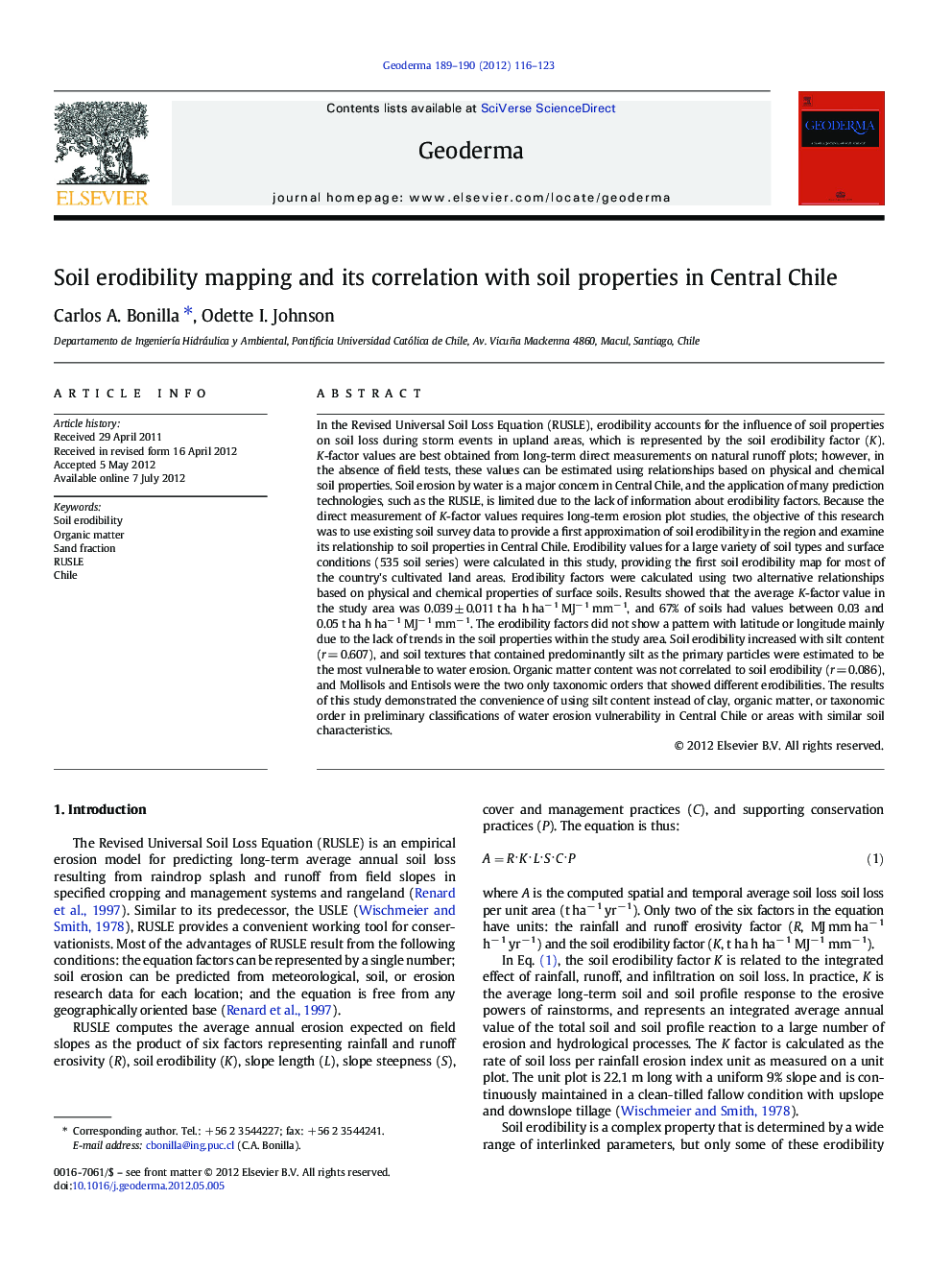| Article ID | Journal | Published Year | Pages | File Type |
|---|---|---|---|---|
| 4573579 | Geoderma | 2012 | 8 Pages |
In the Revised Universal Soil Loss Equation (RUSLE), erodibility accounts for the influence of soil properties on soil loss during storm events in upland areas, which is represented by the soil erodibility factor (K). K-factor values are best obtained from long-term direct measurements on natural runoff plots; however, in the absence of field tests, these values can be estimated using relationships based on physical and chemical soil properties. Soil erosion by water is a major concern in Central Chile, and the application of many prediction technologies, such as the RUSLE, is limited due to the lack of information about erodibility factors. Because the direct measurement of K-factor values requires long-term erosion plot studies, the objective of this research was to use existing soil survey data to provide a first approximation of soil erodibility in the region and examine its relationship to soil properties in Central Chile. Erodibility values for a large variety of soil types and surface conditions (535 soil series) were calculated in this study, providing the first soil erodibility map for most of the country's cultivated land areas. Erodibility factors were calculated using two alternative relationships based on physical and chemical properties of surface soils. Results showed that the average K-factor value in the study area was 0.039 ± 0.011 t ha h ha− 1 MJ− 1 mm− 1, and 67% of soils had values between 0.03 and 0.05 t ha h ha− 1 MJ− 1 mm− 1. The erodibility factors did not show a pattern with latitude or longitude mainly due to the lack of trends in the soil properties within the study area. Soil erodibility increased with silt content (r = 0.607), and soil textures that contained predominantly silt as the primary particles were estimated to be the most vulnerable to water erosion. Organic matter content was not correlated to soil erodibility (r = 0.086), and Mollisols and Entisols were the two only taxonomic orders that showed different erodibilities. The results of this study demonstrated the convenience of using silt content instead of clay, organic matter, or taxonomic order in preliminary classifications of water erosion vulnerability in Central Chile or areas with similar soil characteristics.
► We built the first soil erodibility map for most of the agricultural land in Chile. ► Silty-textured soils were estimated to be the most vulnerable to water erosion. ► Organic matter content did not correlate with soil erodibility. ► Silt was a better predictor of erodibility than clay, organic matter or taxonomic order.
